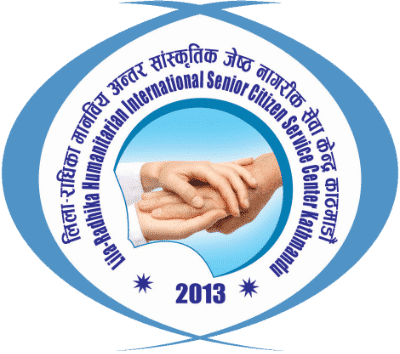At the end of 2018, members, volunteers and staff of the HVD Berlin-Brandenburg went on an educational trip to Nepal. The choice fell on the small country located on the southern slopes of the Himalayas, because the association has been involved in a social project in Nepal for some time.
Traveling to a foreign country can be exciting, intense and unforgettable. Nepal, with its fascinating contrasts, quickly captivated the travel group. With an area of 147,000 km², Nepal is about as large as Bavaria and Austria combined. Eight of the ten highest mountains in the world are in Nepal, including Everest at 8,850 meters.
The journey took us from the capital Kathmandu, with its Hindu cremation sites, its medieval maze of alleys, chaotic road traffic and heavy air pollution, to Chitwan National Park and on to Lumbini, the birthplace of Buddha, a world-class pilgrimage site. Pokhara, located on the dazzling Lake Phewa, was explored by boat and the view of the white peaks of Annapurna enjoyed. Via Gorkha with its impressive fortress, we continued on to the central mountainous region to Nagarkot and Dhulikhel with its interesting fauna and flora. A highlight was the small town of Bhaktapur, which enchanted with its pink brick buildings, artistic wood carvings and magnificent stone sculptures. Back in Kathmandu with its thousand faces, we visited palaces, temples and shrines. Many architectural treasures of the city were hit by the devastating earthquake of 2015, but significant buildings are being restored as faithfully as possible (also with the help of German foundations).
Culture and religion: Many festivals and rituals, no church
The culture is at least as diverse as the landscape. The great wealth of ethnic groups with over 50 languages, each of which maintains its own culture and tradition, is striking. The fact that this diversity has been preserved is also due to the fact that Nepal was never colonized. It is a country with deep national pride and ethnic self-confidence. The friendliness of the people is deeply rooted, and the tour group quickly learned to put their hands together for a Namaste greeting.
The largest share of Nepal’s population belongs to Hinduism (80 percent), and about 15 percent of the 30.5 million inhabitants profess Buddhism. Both religions do not know a church; Hinduism consists of many sects and cults. According to Buddhist and Hindu beliefs, people’s lives are determined by their karma, the force generated by positive and negative actions that is decisive for subsequent rebirth. For believers, different prayers and rituals are important. The religious goal of every Hindu is to free himself from the cycle of rebirth, to achieve salvation and to enter eternal life in Nirvana – the paradise.
Help for the elderly as an intergenerational task
Nepal is one of the poorest countries in the world; half of the population lives on less than two euros a day. According to the UN’s Human Development Index for 2017, Nepal ranks 144th out of 188 countries. The country’s health care system is completely inadequate; health and long-term care insurance do not exist. Thus, the local shaman often takes over medical care. The losers in the health care system are primarily the elderly. They represent one of the fastest growing population groups in Nepal; according to forecasts, their share will more than double by 2050. This demographic development suggests major problems for the care and nursing of the older generation.
Traditionally, the Nepalese have numerous offspring so that children and the elderly can be protected and cared for in the family. We learned that usually one of the sons takes over the care of the parents. For some years, however, there has been a clear change in this role behavior. Many children choose not to care for their parents, take up work abroad – currently some two million Nepalese work in the Gulf States or emigrate to Southeast and East Asia – or do not outlive their parents. Then the elderly are left isolated and impoverished. Single and widowed women are particularly affected when, for example, they lose their possessions on the death of their husband and are left penniless.
A visit to a home for the elderly in the village of Devghat, which is run by the residents together with the municipality, gave a lasting impression of this situation. It is one of the few facilities for the elderly in Nepal. Senior citizens are only admitted here if it can be proven that they have no relatives or that they have been abandoned by their families and, above all, are in financial need.
On site, the tour group soon got into conversation with the old people. Many were sad and felt lonely because of the distance to their original home. It quickly became apparent that there was a lack of medical aids and trained personnel, most of all professional care for the elderly.
Mission: Development cooperation
Alongside Japan and the United Kingdom, Germany is one of Nepal’s most important bilateral donor countries. German development cooperation with Nepal focuses on the areas of local self-government, family planning and health care. After the moving visit to Devghat, the tour group decided to support the existing initiative of a social development cooperation project.
Donations are necessary so that this important project can be developed sustainably. Every euro contributes to the development of this model center for the elderly in Nepal.
Manfred Isemeyer
